Songs of the Contemporary Social War II
![“Companys anarquistas, sereu venjats!” [Compañeros anarquistas, ¡seréis vengados!], panfleto, ca. 1976](https://recursos.museoreinasofia.es/styles/large_landscape/public/Actividades/1_snippet.png.webp)
“Companys anarquistas, sereu venjats!” (Anarchist Comrades, You Will Be Vindicated!), pamphlet, ca. 1976
Held on 02 nov 2021
Songs of the Contemporary Social War II is a project carried out inside the framework of the exhibition Pedro G. Romero. Verse-Composing Machines and comprises a large-scale installation and stage design conceived by Pedro G. Romero as a form of improvised square where live musical performances unfold. Inside these musical pieces, songs that Guy Debord, Alice Becker-Ho and other situationists wrote about Spain in the transition to democracy are performed and have been recovered by this artist and researcher.
In his work, Romero analyses historical events, life and the circulation of images that have represented and narrated key events in Spain’s history across the twentieth century. For such purposes, he draws on a vast archive of knowledge, disciplines and situations which bring together, schizoanalytically, sacramental iconography, the iconoclastic expression of early twentieth-century artistic avant-garde movements, flamenco, popular culture concepts and imagery, the economy, culture policies and forms of urban speculation, among others. This extensive repertory is resignified in an artwork that bursts forth indistinctly into installation, research, writing, curatorship and the connection with film and live arts.
Songs of the Contemporary Social War alludes to the title of a project created by Guy Debord, signed anonymously with the pseudonym “Some iconoclasts” and dated 1981. The initiative entailed editing a popular Spanish songbook, in a similar fashion to the one made by Federico García Lorca with flamenco dancer La Argentinita in 1931, which would form a kind of chronicle of the Spanish transition from the perspective of workers’ struggles for autonomy. This new mise en scène gives continuity to the activity Guy Debord. Songs of the Contemporary War, organised by the Museo Reina Sofía, whereby three choirs performed a selection of these songs live as a coda to the programme Guy Debord and René Viénet, from Lettrism to Situationism. Film Is Dead: If You Want, Let’s Proceed to the Debate.
This second manifestation features performers Rodrigo Cuevas, Gabriel de la Tomasa, Niño de Elche, Pollito de Graná, Oier Etxeberria, Julio Jara, Le Parody, Soleá Morente and Christina Rosenvinge. A pre-eminent selection of artists who, in the fields of flamenco, avant-garde art and independent music, continue Guy Debord’s objective to use this songbook to bring together classical, experimental and popular music.
The following synopses and clarifications on the authorship of songs that are part of this programme have been crafted from different sources, such as the Songs of the Contemporary Social War manifesto from 1981, lyrics from the compositions and the research of Pedro G. Romero.
Programme
From 2 to 7 November 2021
Gabriel de la Tomasa. Coplas of the Cádiz Roadblocks
Anonymous, Cádiz, 1977
The Moncloa Pacts (1977) were the first unspoken official manifestation of the agreement between Adolfo Suárez’s Government and the political-trade union opposition. The song interprets how these pacts led to the workers’ assembly movement being rendered irrelevant and thus avoiding any revolutionary intent between workers. At the same time, inspired by the strikes at the Roca factory in Gavà and the workers’ movement in Vitoria in 1976, on 2 November 1977 a mass strike was held by workers from Astilleros S.A. in Cádiz, whereby the city was filled with roadblocks. The protest lasted for two days, before the city was occupied by police — the events recounted in this song.
From 8 to 14 November 2021
El Corofón. The Romance of Capture and the Death of Oriol Solé Sugranyes
Anonymous, Barcelona, 1976
— With the music of Georges Moustaki. Le métèque, 1968
This song is performed by a choir with musical foundations. The importance of Oriol Solé Sugranyes (1948–1976) in the Barcelona workers’ movement during the final years of Francoism cannot be overstated given that he was part of its decisive moments and organisation and crucially continued the proletarian traditions of Francisco Ascaso, Buenaventura Durruti and Francisco Sabater, its greatest exponents. In Francoism’s latter years, Solé was in prison, but escaped in the historic Segovia jailbreak in 1976 along with 28 other prisoners. The Carlos Arias Navarro Government turned this escape into a State matter, and bad luck meant that the fugitives were spotted by one of the countless Guardia Civil patrols searching for them. The ballad becomes laconic at the end, without grandiose words or concessions: one falls, the battle goes on.
From 15 to 21 November 2021
Julio Jara. In Memory of Gladys del Estal
Anonymous, of Gypsy Origin, 1979
Gladys del Estal was an environmental activist killed by a guardia civil officer during a crackdown of the protest organised by Basque anti-nuclear committees in Tudela. Her death moved the population to the extent that in the cities of Pamplona and San Sebastián barricades were erected and a general strike was declared, the most violent in the Basque Country since the Vitoria and Basauri protests in 1976, which left a trail of deaths and casualties at a time when the right to assemble, protest and strike was still prohibited. The song, a rumba, evinces how nobody expresses feelings of retribution through a long history of repression, linked to the Guardia Civil, quite like the gypsies. Equally, it attempts to upend the image of gypsies as marginal figures with little concern for social issues.
From 22 to 28 November 2021
Soleá Morente. Song for the Parla Uprising
Anonymous, Madrid, 1979
During the 1979 election campaign, the general atmosphere of discontent and social protests sparked a series of altercations in different towns, one of them Parla. In this municipality on the outskirts of Madrid, neighbourhood protests triggered by insufficient water supplies caused three days of intense violence. The present song commemorates — to the same tune with which the defence of the Puente de los Franceses in the Peninsular War was celebrated — the roadblock resistance on carretera N-401, a road used by police convoys from Madrid. During the days of the uprising, Parla was the stage for a key revolutionary weapon: direct communication and the rejection of mediators and officers. The revolt ended with 380 arrested, 40 or so injured and one dead.
From 29 November to 5 December 2021
Rodrigo Cuevas. The Segovia Prison
Prisoners’ Song, 1980
Many libertarians felt it was shameful to be content with the crumbs of liberation from Franco’s dictatorship, an accusation aimed at members of the National Confederation of Labour (CNT), an organisation with an anarcho-syndicalist ideology. Conversely, they would not acquiesce in anything that was not the revolution, and after forty years of counter-revolution they would not settle for less. Following the example of activist Oriol Solé Sugranyes and his comrades, members of anarchist revolutionary groups, the libertarians traced a path that led them to the Segovia prison for political prisoners. The song recalls their will to prevail and an awareness of the risks they ran and accepted.
From 6 to 12 December 2021
Christina Rosenvinge. Ballad of Manuel Nogales Toro
Prisoners’ Song, 1980
A delegate on the Board of the SEAT factory and a member of the Revolutionary Army of Workers’ Assistance (ERAT), Manuel Nogales Toro embodies “the wrath of the whole Spanish proletariat” in Debord’s view. He was arrested in 1978 accused of various theft crimes against banking organisations and companies. The expropriations — “the first tax on the bourgeois”, according to an ERAT communiqué — were part of this settling of scores with the ruling class. In return, certain measures were taken, such as the construction of the Herrera de la Mancha prison, where “the transition ended”, as the song ironically utters, or the use of trade unions to break up strikes. The music belongs to the corrido of Juan sin tierra (Landless Juan), a track written by Mexican composer Juan Saldaña in 1956 with versions by Chilean singer-songwriter Víctor Jara and Spanish group SKA-P.
From 10 to 16 January 2022
Niño de Elche. Song for the SEAT Workers Serving Time in Segovia
Anonymous, Compiled in Barcelona, 1980
This focus of this song is on the five proletarians who formed the so-called Revolutionary Army of Workers’ Assistance (ERAT), dedicated to expropriating from companies and banks to help strikers and workers laid off by the SEAT company. In 1978, its members were arrested, accused of belonging to an armed gang and, two years later, sentenced to seven years in prison, serving their sentence in Segovia Prison. “The nationalist hymn of Els Segadors appears here freed from the reactionary weight of Catalanism, serving a worthier cause. The interest in weapons warrants particular attention and is constantly repeated in the form of a chorus”, the message notes at the end of the video clip to the song.
From 17 to 23 January 2022
Pollito de Graná. The Uprising of 29 January
Popular, 1981
The relatively unstable politics of President Adolfo Suárez in relation to Spain’s Autonomous Regions, the legalisation of divorce and, primarily, his failure to suppress Basque insurgence, caused the most riotous uprising in Spain’s history, according to the lyrics to this song. It was an uprising with no hearsay or rumours and was broadly discredited, yet it still continued its inexorable course: the Army would discharge its leader from the Government; bishops met and discovered they were enemies of divorce; the Government revealed that a detained member of ETA had just been tortured to death the previous day, sparking a revolt in the Basque Country; police torturers were prosecuted and immediately after police chiefs resigned. “Democracy, democracy can no longer walk. Because it is lacking, because it lacks military consent”, recites this song, compiled by Debord, to the rhythm of La Cucaracha.
From 31 January to 6 February 2022
Oier Etxeberria. Probe into the Deaths of Zapa and Roberto
Anonymous, Basque Country, 1978
The song alludes to the execution of two members of the Autonomous Anti-Capitalist Commandos — the most radical armed Basque organisation of the time — which took place in Mondragón on 16 November 1978. It was perhaps the most notorious case in the application of the Law of Flight, a kind of extrajudicial execution which allowed the murder of a prisoner to be concealed by simulating their escape. The response to the execution was an extremely violent general strike
From 21 to 27 February 2022
Le Parody. El Tejero
Popular, 1981
The storming of Congress, under the orders of Lieutenant Colonel Antonio Tejero, culminated in an uprising that had been making headway since 17 December 1980, the date on which Tejero laid out his intentions in the pages of the magazine El Alcázar, plans which all leading figures from the political parties chose to ignore. This song relates how the coup led the political parties to cling to the constitutional monarchy. Therefore, as interpreted in the Songs of the Social Contemporary War pamphlet, the generals momentarily sacrificed the hastiest and most extremist elements of their own plot to make the whole political spectrum aware, from UCD to CNT, that they had to choose between calm submission or “the sound of sabres”.
![“Companys anarquistas, sereu venjats!” [Compañeros anarquistas, ¡seréis vengados!], panfleto, ca. 1976](https://recursos.museoreinasofia.es/styles/large_landscape/public/Actividades/1_snippet.png.webp)
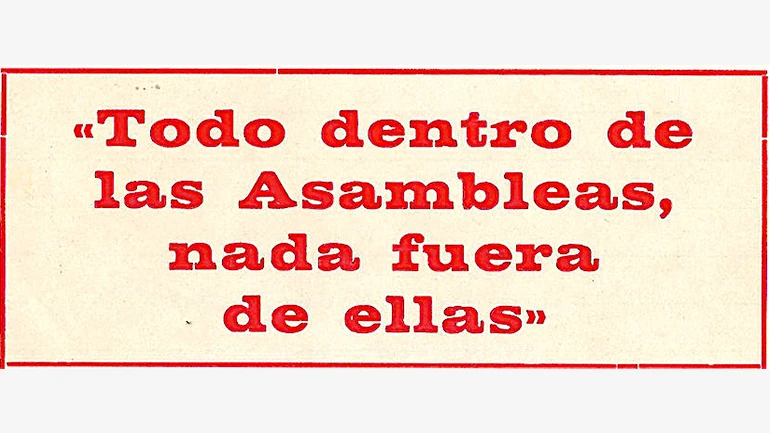
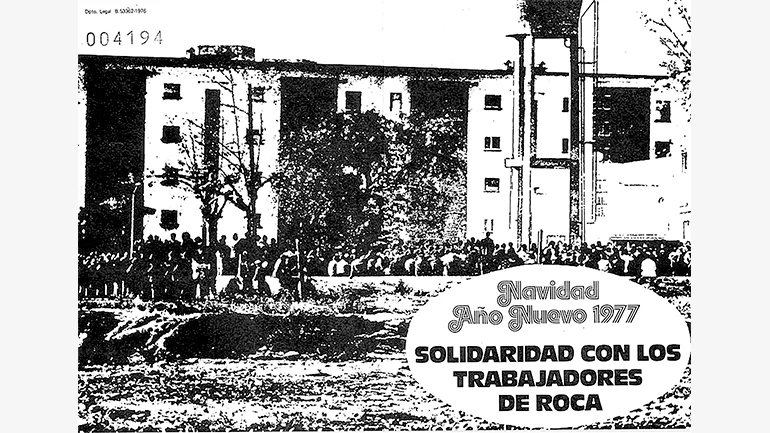
Más actividades

CLINIC 2628. A Community of Writing and Research in the Arts
February – October 2026
Clinic 2628 is a project which supports and brings together writings which stem from the intention to offer a space and sustainable time for research work in art and culture. Framed within an academic context which is increasingly less receptive to the forms in which thinking happens and is expressed, the aim is to rescue the academic from its neoliberal trappings and thus recover the alliance between precision and intuition, work and desire. A further goal is to return writing to a commons which makes this possible through the monitoring of processes and the collectivisation of ideas, stances, references and strategies.
The endeavour, rooted in a collaboration between the Museo Reina Sofía’s Studies Directorship and the Artea research group, via the i+D Experimenta project, is shaped by three annual editions conceived as spaces of experimentation, discussion and a demonstration of writings critical of what is put forward by today’s academia.
What forces, forms and processes are at play when writing about art and aesthetics? In academia, in museums and in other cultural institutions, the practice of writing is traversed by productivist logics which jeopardise rhythms of research and experimentation. The imposition of both scientism inherent in the structure of “the paper” and the quantifying of results which demand a criterion of quality and visibility sterilise and smoothen, from the outset, the coarseness that is particular to writing understood from the concrete part of language: phonic, graphic, syntactic and grammatical resistance connecting the language user to the community the language unites and activates. They also sterilise the roughness enmeshed in the same desire to write, the intuitive, clear and confusing pathways that once again connect the writer to those reading and writing, participating in a common good that is at once discovered and produced.
The progressive commercialisation of knowledge propelled by cognitive capitalism moves further away from the research and production of knowledge in artworks and artistic languages and practices. The work of curators and archive, criticism, performances and essays formerly saw a horizon of formal and emotional possibilities, of imagination that was much broader when not developed in circumstances of competition, indexing and impact. Today, would it be possible to regain, critically not nostalgically, these ways; namely, recovering by forms, and by written forms, the proximity between art thinking and its objects? How to write in another way, to another rhythm, with no more demands than those with which an artwork moves towards different ways of seeing, reading and being in the world?

The (legal) person and the legal form. Chapter II
8, 12, 15 January, 2026 – 16:00 to 19:00
As part of the Studies Constellation, the Study Directoship’s annual fellowship, art historian and theorist Sven Lütticken leads the seminar The (Legal) Person and the Legal Form: Theoretical, Artistic, and Activist Commitments to foster dialogue and deepen the hypotheses and questions driving his research project.
This project, titled Unacting Personhood, Deforming Legal Abstraction, explores the dominance of real abstractions—such as exchange value and legal form—over our processes of subjectivation, and asks how artistic practices can open up alternative ways of representing or performing the subject and their legal condition in the contemporary world.
The seminar consists of eight sessions, divided into three chapters throughout the academic year. While conceived as non-public spaces for discussion and collective work, these sessions complement, nourish, and amplify the public program of the Studies Constellation.
In this second chapter of the seminar, the inquiry into the aesthetics and politics of legal form continues with three sessions that pick up the discussions held in Chapter I but propose new lines of flight. The first session focuses on international law via the writings of the British author China Miéville, which allows us to reconsider the notion of the legal form –following Evgeny Pashukanis— and, through it, a variety of (people’s) tribunals. While the crucial concept of the legal person –as the right-holder central to the form of law— was debated in Chapter I, the second session focuses on attempts to extend personhood not (just) to corporations, but rather to nonhuman animals or ecosystems. Finally, the third session poses the question: how can groups and networks use officially recognized organizational forms (such as the foundation or the cooperative) and/or use a collective persona (without necessarily a legal “infrastructure” to match) to act and represent themselves?

Oliver Laxe. HU/هُوَ. Dance as if no one were watching you
Tuesday, 16 December 2025 – 7pm
As a preamble to the opening of the exhibition HU/هُوَ. Dance as if no one were watching you, film-maker Oliver Laxe (Paris, 1982) engages in conversation with the show’s curators, Julia Morandeira and Chema González, touching on the working processes and visual references that articulate this site-specific project for the Museo Reina Sofía. The installation unveils a new programme in Space 1, devoted from this point on to projects by artists and film-makers who conduct investigations into the moving image, sound and other mediums in their exhibition forms.
Oliver Laxe’s film-making is situated in a resilient, cross-border territory, where the material and the political live side by side. In HU/هُوَ. Dance as if no one were watching you, this drift is sculpted into a search for the transcendency that arises between dancing bodies, sacred architectures and landscapes subjected to elemental and cosmological forces. As a result, this conversation seeks to explore the relationship the piece bears to the imagery of ancient monotheisms, the resonance of Persian Sufi literature and the role of abstraction as a resistance to literal meaning, as well as looking to analyse the possibilities of the image and the role of music — made here in collaboration with musician David Letellier, who also works under the pseudonym Kangding Ray — in this project.
These inaugural conversations, part of the main working strands of the Museo’s Public Programmes Area, aim to explore in greater depth the exhibition narratives of the shows organised by the Museo from the perspective of artists, curators and specialists.
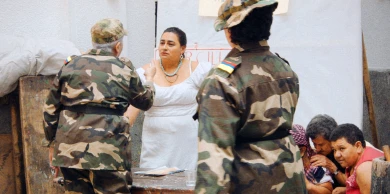
Manuel Correa. The Shape of Now
13 DIC 2025
The Shape of Now is a documentary that explores the challenges and paradoxes of memory, reparation and post-conflict justice, extending a defiant and questioning gaze towards the six-decade armed conflict in which the Colombian State, guerrillas and paramilitary groups clashed to leave millions of victims in the country. The screening is conducted by the Aesthetics of Peace and Desertion Tactics study group and includes a presentation by and discussion with the film’s director, Manuel Correa.
The film surveys the consequences of the peace agreements signed in 2016 between the Colombian State and the FARC guerrilla organisation through the optics of different victims. It was recorded shortly after this signing, a time in which doubts lingered over the country’s future, with many groups speculating in the narration. Correa harnesses the power of images, visual and bodily memory, fiction and re-staging as tools for understanding the conflict, memory and healing, as well as for the achievement of a just peace that acknowledges and remembers all victims.
The activity is framed inside the research propelled by Aesthetics of Peace and Desertion Tactics, a study group developed by the Museo’s Study Directorship and Study Centre. This annual group seeks to rethink, from a theoretical-critical and historical-artistic perspective, the complex framework of concepts and exercises which operate under the notion of pacifism. A term that calls on not only myriad practices ranging from anti-militarism and anti-war movements to activism for non-violence, but also opens topical debates around violence, justice, reparation and desertion.
Framed in this context, the screening seeks to reflect on propositions of transitional and anti-punitive justice, and on an overlapping with artistic and audiovisual practices, particularly in conflicts that have engendered serious human rights violations. In such conflicts, the role played by audiovisual productions encompasses numerous challenges and ethical, aesthetic and political debates, among them those related to the limits of representation, the issue of revictimisation and the risks involved in the artistic commitment to justice. These themes will be addressed in a discussion held after the session.
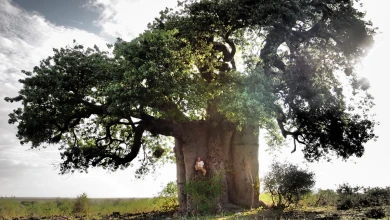
Francisco López and Barbara Ellison
Thursday, 11 December - 8pm
The third session in the series brings together two international reference points in sound art in one evening — two independent performances which converse through their proximity here. Barbara Ellison opens proceedings with a piece centred on the perceptively ambiguous and the ghostly, where voices, sounds and materials become spectral manifestations.
This is followed by Francisco López, an internationally renowned Spanish sound artist, who presents one of his radical immersions in deep listening, with his work an invitation to submerge oneself in sound matter as a transformative experience.
This double session sets forth an encounter between two artists who, from different perspectives, share the same search: to open ears to territories where sound becomes a poetic force and space of resistance.
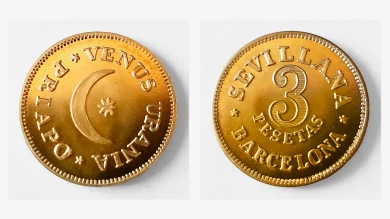
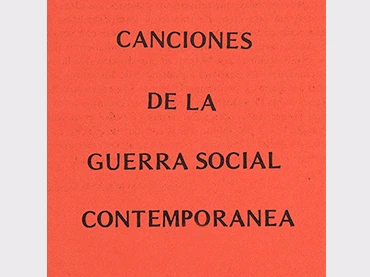



![Miguel Brieva, ilustración de la novela infantil Manuela y los Cakirukos (Reservoir Books, 2022) [izquierda] y Cibeles no conduzcas, 2023 [derecha]. Cortesía del artista](https://recursos.museoreinasofia.es/styles/small_landscape/public/Actividades/ecologias_del_deseo_utopico.jpg.webp)
![Ángel Alonso, Charbon [Carbón], 1964. Museo Reina Sofía](https://recursos.museoreinasofia.es/styles/small_landscape/public/Actividades/perspectivas_ecoambientales.jpg.webp)